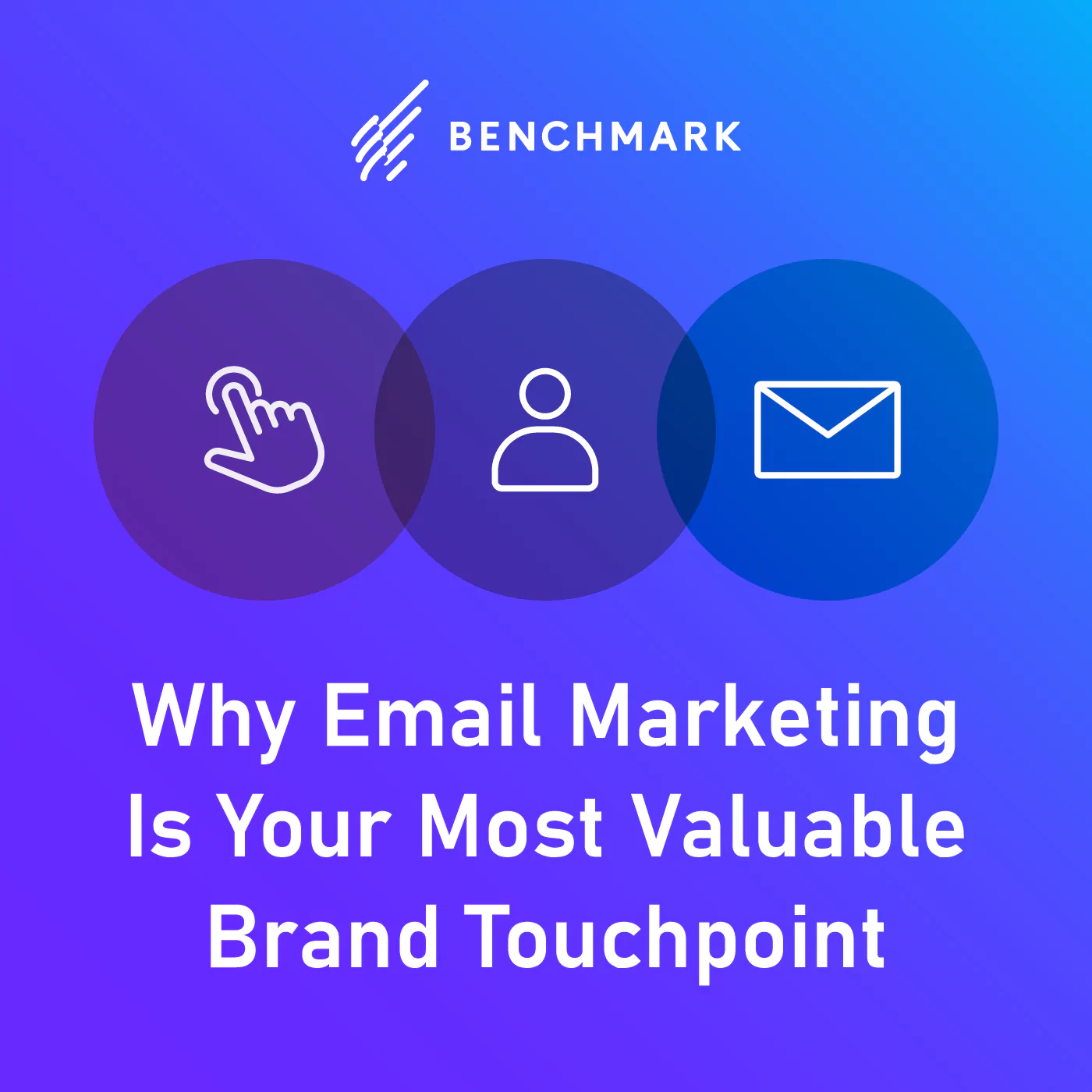
In this increasingly connected world, beset with digital infrastructure, there are countless ways in which a brand can reach its target audience.
Each moment of interaction is known as a brand touchpoint — a fresh opportunity to leave an impression. You can make your brand look worse, raise some interest, or fail to do anything memorable whatsoever.
And because no company — however enormous — has the creative or monetary resources to approach each possible touchpoint with the same care, it’s necessary to pick out the touchpoints that offer the most value in prospect. So what should you prioritize?
Social media holds a lot of sway, of course, and is fairly versatile. A strong website with a live chat feature can be excellent for earning conversions.
If going to put your effort towards getting the most from one particular touchpoint, it should be email marketing. On the whole, it’s by far the most reliably valuable.
It’s relevant and viable for precise targeting
When you’re trying to reach people totally unfamiliar with your business, a platform like Facebook Ads provides optimal targeting precision, but a touchpoint needs something a little more in-depth than someone simply glancing at one of your ads.
What sets email marketing apart is that it relies on retargeting — marketing to people already interested in your brand.
Once you’ve built up your email database, you can get very specific about how you send out your emails. You can send one version to everyone under a particular age or in a certain profession and another version to everyone else, for instance. Getting that granular with your approach might seem unwarranted when reaching out to strangers, but when you know that you’re reaching an invested audience, it’s surely worth it.
Since you can track when your emails are opened (and when they’re not), you can target with even greater precision the longer you email someone. In the above example, Framebridge created an email to go out instead of its regular marketing email — an email specifically for those who haven’t been opening Framebridge emails.
If the email changes their mind, great. If it doesn’t, then they get removed from the mailing list, and the company gets to stop wasting money on sending them emails they don’t really want. Consider the old adage that you can’t miss someone if they never go away. It’s better for someone who’s become apathetic to be unsubscribed — that way, at least, there’s a chance that they’ll rediscover their interest down the line and choose to subscribe once more.
Using this kind of awareness of the recipient’s situation and likely interests will significantly raise the value of your average email by making its message much more impactful. Don’t you naturally gravitate away from brands that send you generic messages? But it isn’t just targeting that you can nail with email marketing, as we’ll see next.
It’s perfectly suited to personalization
There’s the basic form of email personalization — including the recipient’s name in various places — but there’s so much more that can be achieved.
I heard an interesting comparison when listening to email marketing guru Andrew Chaperon’s appearance on the Marketing Speak podcast. He likened advanced email marketing to writing a choose-your-own-adventure story, allowing recipients to take different paths:
“Everyone starts off in the same adventure, in the same story, if they have come via a certain squeeze page, and then I will quickly try to figure out what they are about and I will create different pathways. I will allow people to self-select what interests them.”
Instead of viewing each touchpoint as independent, you can focus on planning a series of touchpoints that steadily present your brand in a particular way (you can also look at this as broad lead nurturing). With each email recipient getting emails that reflect their preferences (mentioning new products relevant to them, and offering content that entertains and informs them), you can slowly, meticulously, and consistently improve your brand image.
This is particularly easy to accomplish for any service that gathers rich use data, because it can periodically weigh in with insights that make the user’s activities feel more momentous. Uber’s yearly recap email layout (see above) is a great example, because each stat adds something: most usefully, reminding the recipient of how long they’ve been a member makes it feel even more like a core part of their routine.
Using data in this way is incredibly potent for how easy it is. The recipient can easily feel understood, even though it’s automatically generated with no manual involvement outside of making the template and writing the set of comments. But you don’t have to stop there. Whenever you feel like it, you can take the time to add some user-specific comments — when you’re emailing your biggest clients, it can be worth it.
It allows near-boundless creativity
It’s entirely up to you what you do with an email, because you can make it as long, short, simple or complex as you like.
Maybe you want to fill it with flashy animations and embedded videos, or leave it sparse and minimalistic — either way, you’re covered. Factor in the importance of having a unique brand style (both visually and otherwise), and it’s clearly a major advantage.
Supposing you want to depict your brand as informal and comedic in tone. It’s a gambit, but some brands do this extremely well (see Old Spice, for instance, or Firebox). In an email, you can run through all the jokes you want, splurge on wild colors, and even add interactive elements to spice things up. You can make your emails indistinguishable from any others.
For the aforementioned Firebox, the personality is both textual and visual. Anyone who’s bought from the store is clearly comfortable with playful content, so the company leans into it as boldly as it can, and it really works. You’d never mistake a Firebox product description for one from another company (e.g. “Go right off the grid, escape to the country, find that Snorlax” for “ROBOT HEAD PORTABLE CHARGERS”).
Imagine scrolling through your inbox, seeing plenty of off-white backgrounds with generic hero images, and happening upon a wall of neon yellow with a face embedded in it. That’s something that would get your attention, surely. Now imagine trying to convey personality of that magnitude through other formats. It’s fair to say you’d struggle to manage it.
Through digital ads? Too many restrictions: not enough space, not enough characters. Offline ads? Too difficult to gauge performance. Social media posts and conversations? Definitely viable but extremely risky (you never know when something might blow up in your face, as social media marketing can go very wrong), and also limited by formatting — longer-form content is generally better for showing personality. A small attached image of the above wouldn’t have the same effect as the lengthy column you can have in an email.
It’s great for spurring further touchpoints
Another thing that works in email marketing’s favor is how effective it can be as the cornerstone of a marketing strategy.
What I mean by this is that it can consistently push recipients towards other touchpoints, such as social media discussions (through the inclusion of social function buttons), website visits (through strong CTAs), and even in-person meetings (through the detailed promotion and booking of brand events).
Having the aforementioned room for creativity, and knowing that the reader is relatively likely to stick around when the email is suitably targeted and personalized, you can take your time to run through numerous points with the goal of bringing attention to those other touchpoints. In the same way that your homepage greets people before passing value to other pages, your emails can greet your biggest customers before passing value to other touchpoints.
When people do move along to those touchpoints, you can feed that data back into your emails, as TunnelBear did, with the above retention email. Email a customer to encourage them to talk about you through social media, then email them once they do to reward them, creating a rewarding loop. Until your data starts to suggest that you’re sending too many emails, at least, you can make a significant effort to use emails as action prompts.
If nothing else, that makes email marketing the most economical brand touchpoint, so even if it lacked potency, it would still be worth pursuing for its sheer ROI. But since it’s also a powerful tool for doing everything from announcing new products to keeping interested parties apprised of the latest company updates, it’s an irresistible package.
Which of the various contenders could stack up against everything email marketing brings to the table? It’s superbly versatile and configurable. It can be deployed at scale through templating and triggering, all without incurring enormous costs. It can delight recipients with finely-targeted and personalized content, and smoothly pass traffic to other touchpoints. For these reasons, and more, it’s the inarguable champion.







